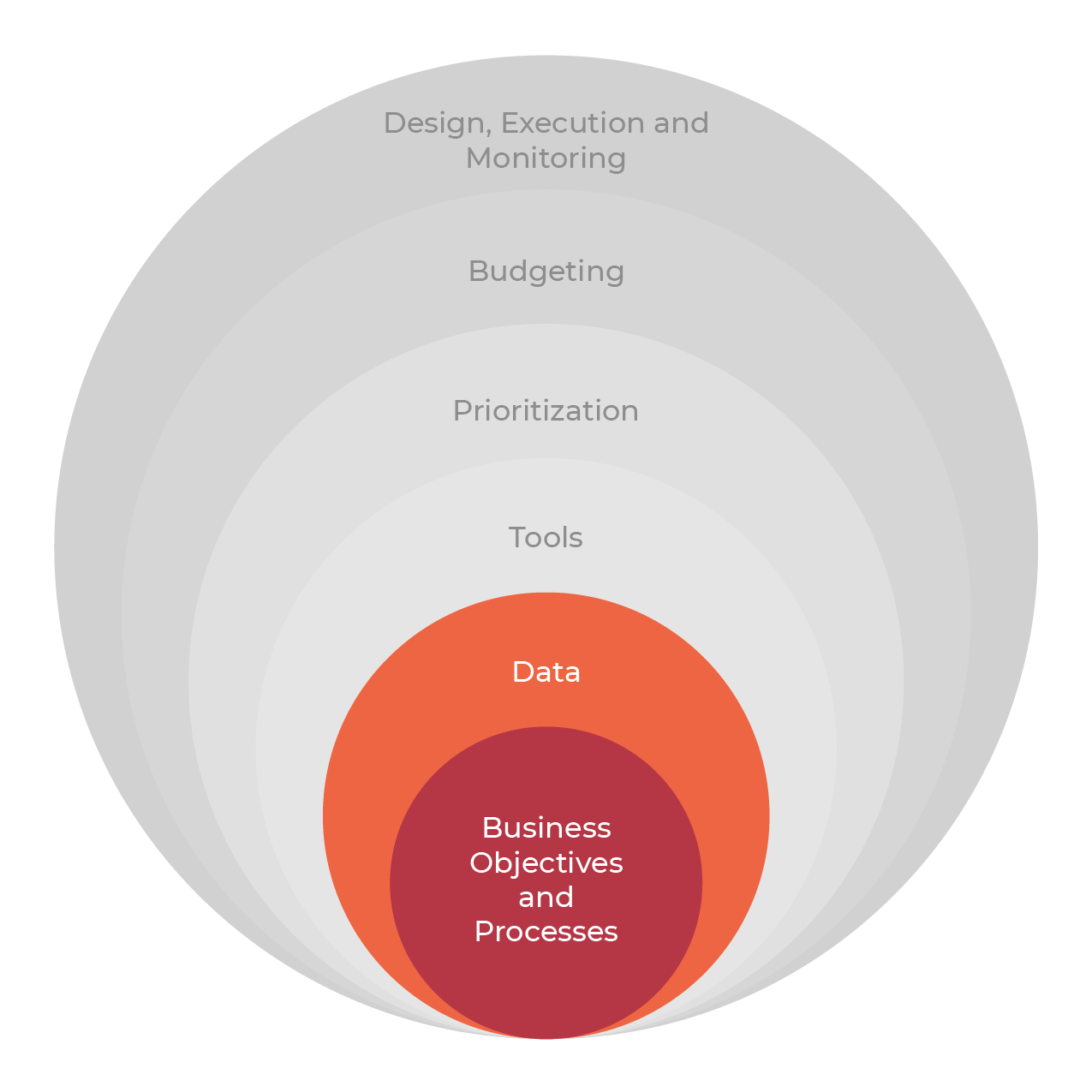Today we are going to move beyond the core of the onion to the second tier of the Integrated Asset Management (IAM) Framework, where we will focus on Data. I am going to do my best not to create too many posts that focus on data as many of my other posts revolve around the importance of consistent and defensible data.
When you shift your focus to data, we encourage our clients to develop what we call a “desired dataset”. Your desired dataset should consist of the types of data you need in order to answer the questions you have related to your facilities and infrastructure. Second, for each type of data you need to decide what specific data you want to collect. For example, if you are doing Equipment Inventory & Tagging, what types of equipment do you want to tag, and what information (beyond Make, Model and Serial Number) do you want to collect on each type of equipment.
It is fairly natural to think that more data is always better. In many cases that can be true. However, before adding more data to your desired dataset you need to remember that you need to keep the data up-to-date over time. You need to consider the effort that will be required to maintain the data based on capital renewal and maintenance activities. You do not want to gather an unwieldy dataset that you do not have the capacity to maintain over time.
With a firm idea of what your desired dataset looks like, you can begin to gather existing information as well as identify data gaps that will need to be filled through assessment or inventory projects. Before you start to use existing data, you need to ask yourself a few questions. How confident am I in the existing data? Is the data current or legacy data? Do I know where all our data is?
Wherever possible, you want to get value out of existing data. However, only if it will add value and not create more trouble than it is worth downstream. We have many examples of both situations. The key is to take the time to understand the value and the limitations of your current dataset before you decide to leverage it or start over.
Before we leave data behind, my next post will focus on what we call the Hierarchy of Existing Facility Data Needs. We have already introduced you to the onion. Next week we will show you the Pyramid.
The foundation of any sustainable buildings program is the comparison of the performance or design of capital assets against current industry standards and best practices. What gets measured can be managed. The collection of the appropriate data can allow for benchmarking of current performance, the establishment of reasonable targets for improvement as well as the monitoring of progress towards these goals.




